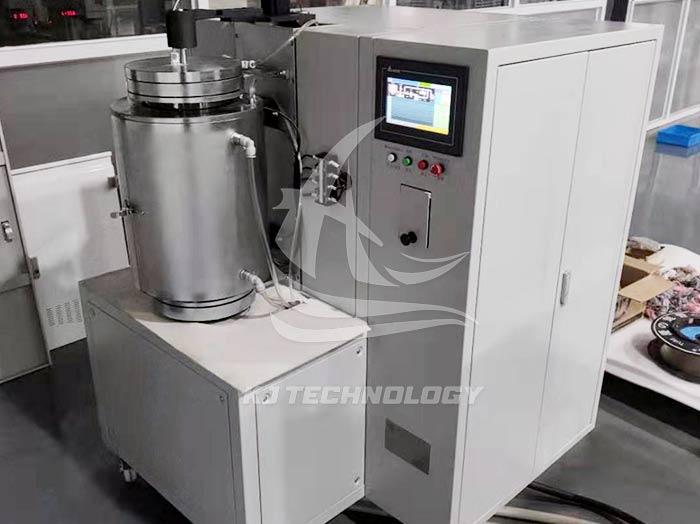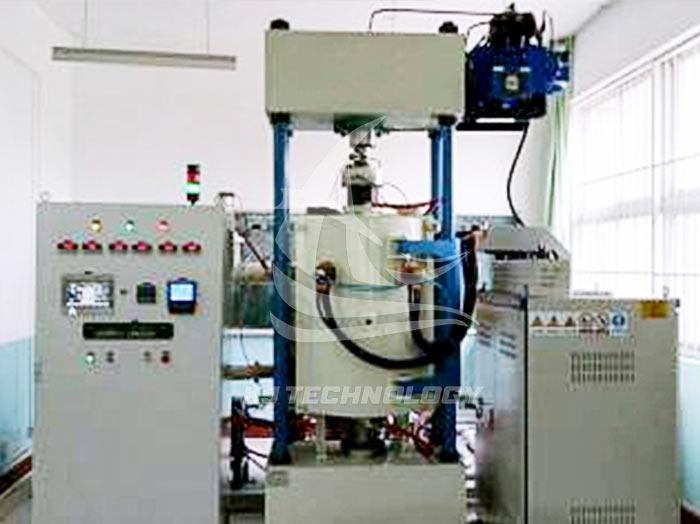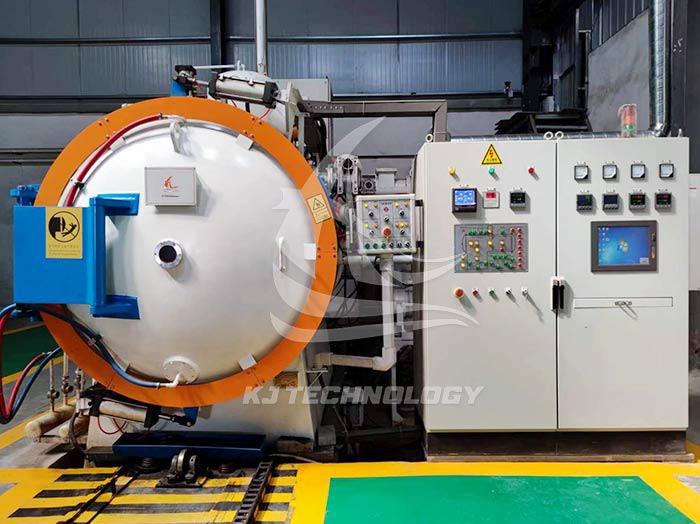What experiments can be conducted in a laboratory graphite vacuum furnace?
 08-06-2025 Author: KJ technology
08-06-2025 Author: KJ technology
The laboratory graphite vacuum furnace, with its high temperature performance, high vacuum degree, and controllable atmosphere environment, can support various material science experiments and industrial process research. The following experiments can be carried out:
1. Metal Material Experiment
Heat treatment and alloying
Experimental content: Annealing, quenching, tempering and other heat treatments are carried out on metal materials (such as steel, titanium alloys, nickel based alloys), or alloying is achieved through vacuum melting.
Advantages: The vacuum environment can prevent metal oxidation, and the graphite heating element provides a uniform high-temperature field, ensuring consistent material properties.
Application scenarios: Preparation of high-temperature alloys in the aerospace industry and strengthening treatment of automotive components.
Metal sintering
Experimental content: Compact metal powders (such as hard alloys and tungsten copper alloys) into dense blocks at high temperatures.
Advantages: Graphite molds have high temperature resistance and good thermal conductivity, and can be quickly heated to sintering temperature (usually 1200-1600 ℃), shortening the experimental period.
Application scenario: Manufacturing of cutting tools and molds in the powder metallurgy industry.
2. Ceramic Material Experiment
Ceramic sintering and crystallization
Experimental content: High temperature sintering of ceramic powders (such as alumina and silicon nitride) or induction of specific crystal forms.
Advantages: Vacuum environment can eliminate gas impurities, graphite heating elements provide stable high temperature, and improve ceramic density and hardness.
Application scenarios: Research and development of electronic ceramics (such as MLCC capacitors) and structural ceramics (such as ceramic bearings).
Preparation of Ceramic Metal Composite Materials
Experimental content: Combining ceramics with metals (such as aluminum and copper) at high temperatures to form composite materials.
Advantages: The graphite furnace can withstand rapid cooling and heating during the preparation of composite materials, preventing cracking.
Application scenario: Development of high-temperature resistant and lightweight materials in the aerospace industry.
3. Electronic Materials Experiment
Semiconductor Material Growth and Heat Treatment
Experimental content: Growing silicon crystals and silicon carbide crystals under vacuum or inert atmosphere, or performing diffusion, annealing and other processes on semiconductor materials.
Advantages: Graphite heating elements provide a uniform temperature field, ensuring crystal quality; Vacuum environment prevents impurity contamination.
Application scenarios: Manufacturing of integrated circuit chips and power devices.
Graphitization treatment
Experimental content: High temperature graphitization of carbon materials (such as carbon fiber and graphene) to enhance conductivity and thermal stability.
Advantages: The graphite furnace can withstand high temperatures above 3000 ℃, meeting the requirements of graphitization processes.
Application scenario: Research and development of battery electrode materials and conductive composite materials in the field of new energy.
4. Chemical Materials Experiment
Thermal decomposition and polymerization of organic materials
Experimental content: Pyrolysis or induced polymerization of organic materials (such as polyimide and phenolic resin) under vacuum or inert atmosphere.
Advantages: Graphite heating elements are resistant to chemical corrosion and can accurately control reaction temperature and atmosphere.
Application scenarios: Synthesis of carbon fiber precursors and high-performance polymers.
catalyst activation
Experimental content: Activate catalysts (such as metal oxides and molecular sieves) at high temperatures to enhance catalytic activity.
Advantages: The vacuum environment can eliminate surface adsorbed gases, and the graphite furnace provides uniform activation temperature.
Application scenario: Optimization of catalytic reactions in the chemical industry.
5. New Material Research and Development Experiment
Synthesis of High Temperature Ceramics and Superhard Materials
Experimental content: Synthesize new ceramics (such as boron nitride, titanium carbide) or superhard materials (such as diamond, cubic boron nitride) at extreme high temperatures.
Advantages: The graphite vacuum furnace can provide high temperatures above 2000 ℃, meeting the requirements for new material synthesis.
Application scenario: Exploration of high-performance materials in the fields of aerospace and defense technology.
Preparation of nanomaterials
Experimental content: Prepare low dimensional materials such as nanoparticles and nanowires by controlling temperature and atmosphere.
Advantage: The uniform temperature field of the graphite furnace can prevent the agglomeration of nanomaterials and improve the preparation quality.
Application scenarios: Research and development of nanoelectronic devices and biosensors.
6. Environmental Protection and Energy Experiment
Waste heat treatment
Experimental content: Pyrolysis of industrial waste (such as waste plastics and waste rubber) under high temperature and vacuum to achieve resource utilization.
Advantages: Graphite vacuum furnace can prevent secondary pollution during pyrolysis process and improve processing efficiency.
Application scenario: Waste reduction and harmless treatment in the environmental protection industry.
Research and development of new energy materials
Experimental content: High temperature heat treatment is performed on the positive and negative electrode materials of lithium-ion batteries and fuel cell catalysts to optimize their electrochemical performance.
Advantages: Graphite heating elements provide stable high temperatures and prevent material oxidation in a vacuum environment.
Application scenarios: Development of key materials in the fields of new energy vehicles and energy storage.








